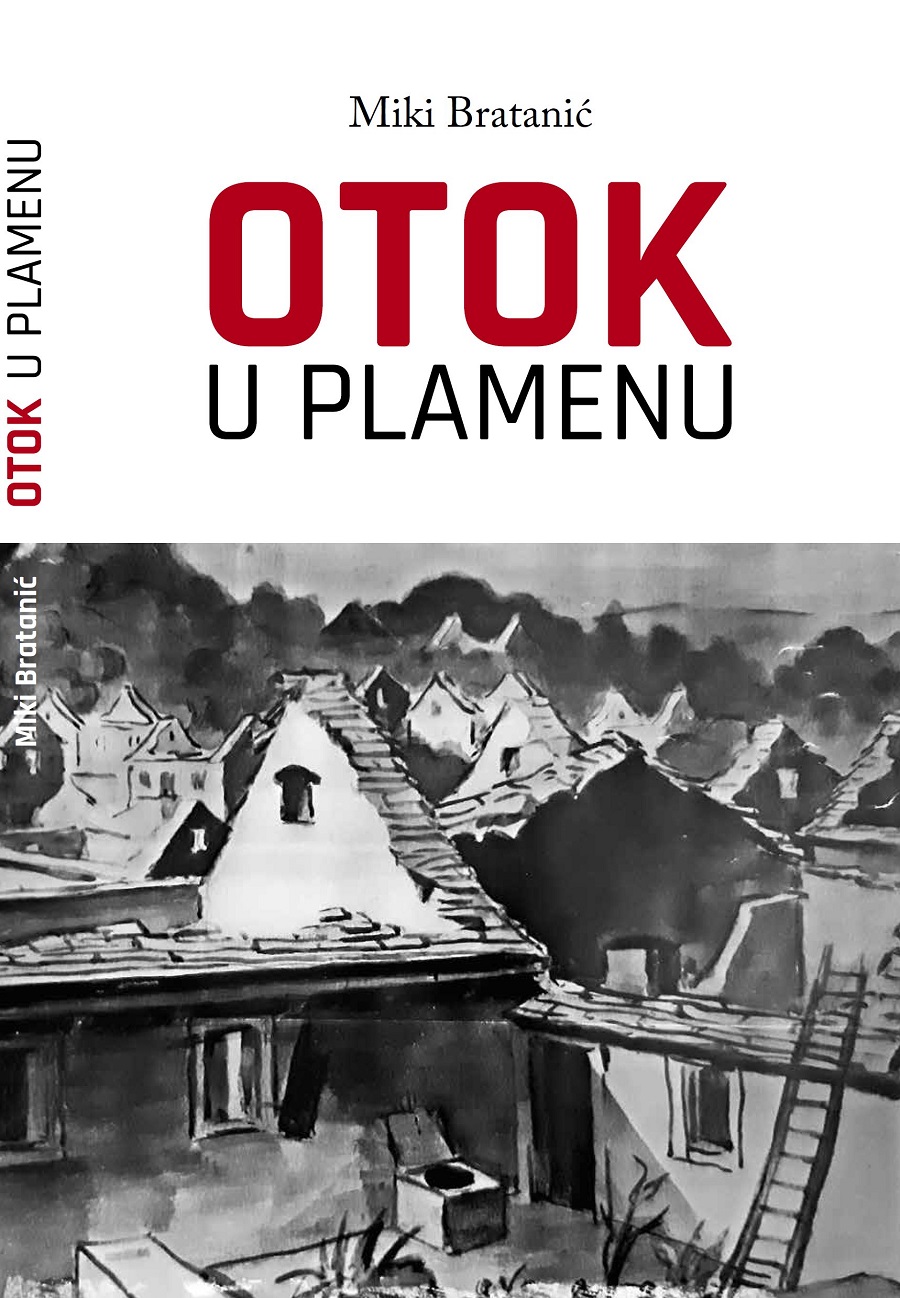January 3, 2021 marks the 78th anniversary of a devastating day for two villages on the island of Hvar, the subject of Miki Bratanic's latest book - Island in Flames.
When I first visited the village of Vrbanj on Hvar back in 2003, I was struck by how many ruins there were in such a living village. Indeed, as I learned, Vrbanj is the biggest village on the island, with over 400 inhabitants. It was only years later that I learned the reason why. For back in 1943, on this very day, the occupying Italian forces burned most of the houses in Vrbanj. Many lay ruined for decades until at least some were renovated after the property boom of 2003-5, as foreigner buyers snapped up enchanting stone ruins on an idyllic Adriatic island. Almost all of them without knowing the reason their new purchases were in such a state of disrepair.
Dalmatian historian and Vrbanj patriot has recorded this troubled period in the island's history with his latest book, An Island in Flames, which is due out shortly.
On this day 3.1.1943. Italian fascists set fire to the villages of Dol and Vrbanj on the island of Hvar. Most of the houses were completely destroyed, and in the middle of winter people were left not only without a roof over their heads, but also without wine and olive oil, the basic source of income from which they lived, which was either spilled or taken away. After that event, a large humanitarian action was launched in Zagreb to collect aid for the victims on the island of Hvar. And many people helped, from ordinary small people, companies, institutions, and municipalities, cities and counties. The rich documentation of the "Committee for Aid to the Victims of the Island of Hvar" from Zagreb, founded by people from the island, preserves, among other things, the payment slip for donations from the city of Vukovar, as well as an interesting list of a ten-member exiled family from Sucuraj.
The Ministry of the Interior and the Ministry of Finance collected aid, both financial and various material forms of footwear, clothing, construction materials, agricultural tools and various other necessities, mostly food, intended for the victims on the island of Hvar.
The board was initially set up to collect so-called aid "Burners" from Vrbanj and Dol victims of the Italian-Fascist arson in 1943, but was of great importance later to the exiles as well from all over the island deported by the German Nazis in 1944.
Among the many requests for help from 1944 there is a list of 25 people from Sucuraj on the island of Hvar who stayed in Šljivoševci, a village in Baranja that belongs to Donji Miholjac, then 53 people in Tiborjevci, then 40 people from various places the island of Hvar who stayed in Šid, 30 people in Brod, and many more them in various other places, mostly in Slavonia.
So this is one big tragic island story, that's why I called it An island on fire, because indeed that flame of war engulfed the whole island.
Thanks to good people, the complete documentation has been preserved on the work of the Committee, so today we can know what the amounts of goods collected and people involved. We also know how they addressed the Committee people from the island of Hvar who were expelled from the island in 1944 and to whom
help was needed, and how their names were preserved in lists and petitions, so this will certainly be a material of interest to many to their descendants or acquaintances.

(An Island in Flames, by Miki Bratanic - the painting is by academic painter Bartul Petric, who visited Vrbanj just a few days after this happened).
The first written report on the tragedy of Vrbanj can be found in the telegram the very next day, January 4, 1943, addressed to Bishop Miho of Hvar by the parish priest of Vrbanja, Don Ivo Šeperica:
Yesterday the Italian authorities set fire to the village of Vrbanj, and about 180 houses in ruins, about 60 were rest spared, but the people were left without housing, without food, without suits, without beds and blankets and no money people in a desperate state of food. Send everything to Vrbanj so that the people do not suffer report the matter to the county authority let them stand up for the people regarding food. Also, you should know there are two victims so far.
The initiation of assistance at the highest state level was encouraged by the bishop Hvar's Miho Pušić in a letter sent on January 7, 1943 to the Ministry of the Interior, in which he reports on the difficult situation on the island of Hvar and begs for help. On the same day, Bishop Pušić sent a telegram to the then Archbishop of Zagreb Alojzije Stepinac, asking him for personal engagement and warning in a special way how the Italian military authorities threatened to destroy the entire island if any of their soldiers are killed.
The rest is history, recorded in a hundred documents that are here find to witness one great tragedy, but also one great one humanitarian action that our island of Hvar may never have in history did not experience. Many will be able to find their family in them a story, or an example of what kind of people we have to be in difficult times.
An Island in Flames will soon be available. For the latest news on how to get it, as well as more from the fabulous Miki Bratanic, check out his official website.


